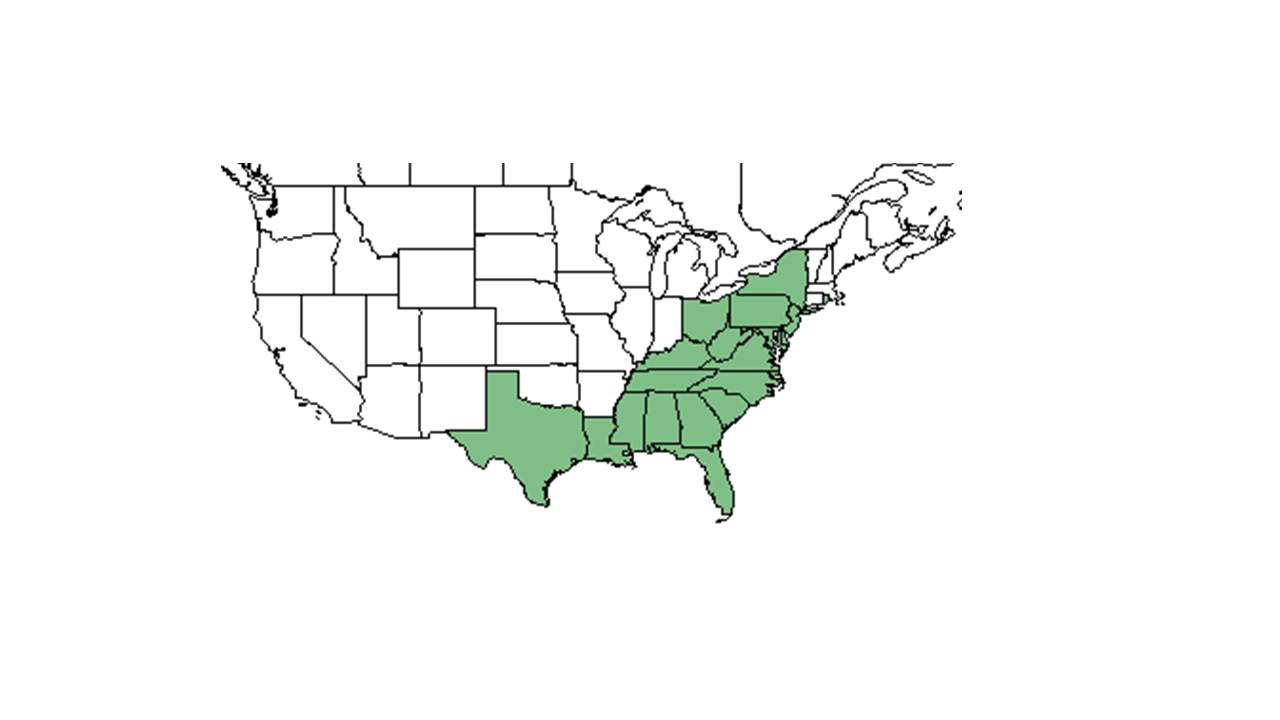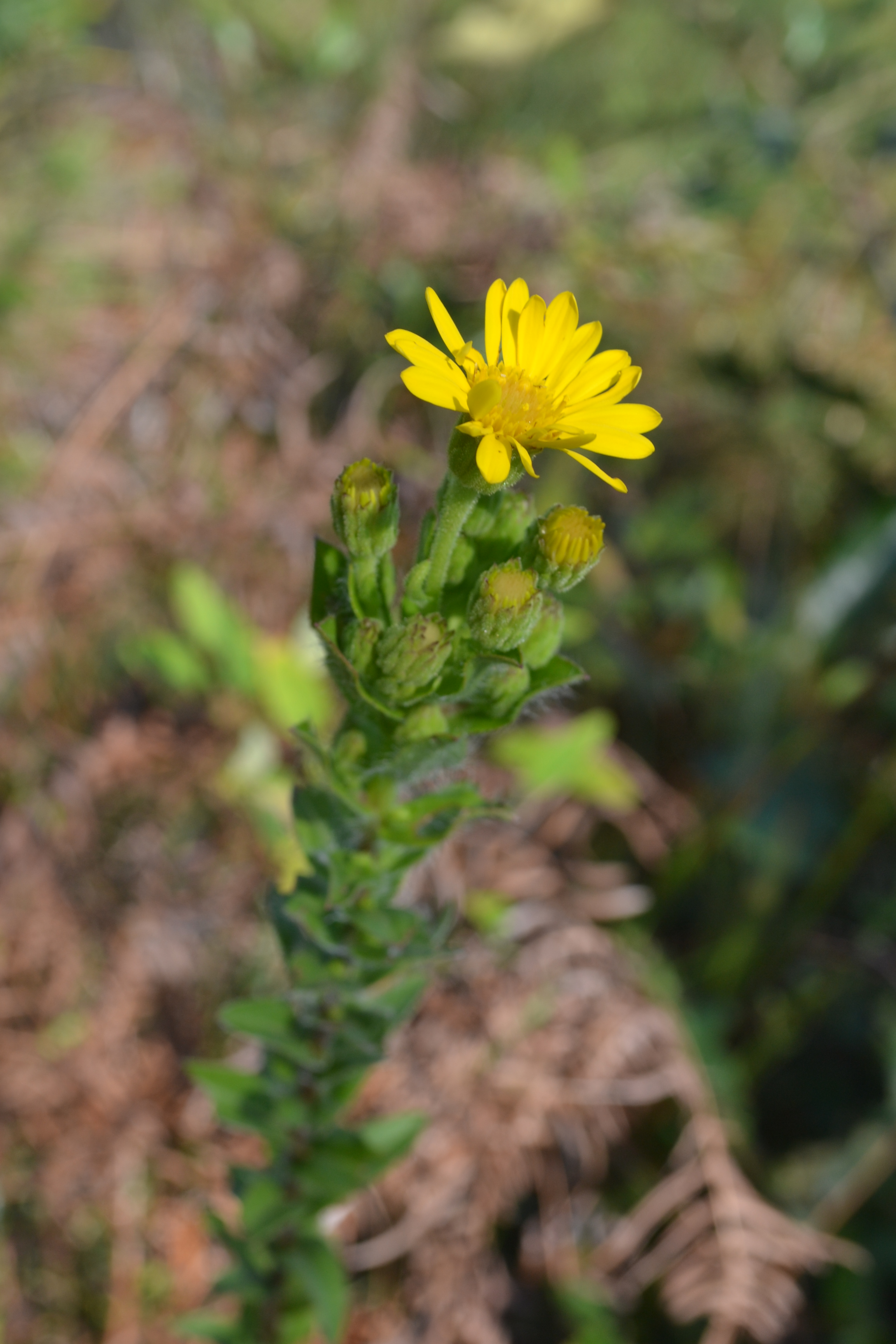Difference between revisions of "Chrysopsis mariana"
| Line 26: | Line 26: | ||
<!-- Basic life history facts such as annual/perrenial, monoecious/dioecious, root morphology, seed type, etc. --> | <!-- Basic life history facts such as annual/perrenial, monoecious/dioecious, root morphology, seed type, etc. --> | ||
A description of ''Chrysopsis mariana'' is provided in [http://efloras.org/florataxon.aspx?flora_id=1&taxon_id=220002890 The Flora of North America]. | A description of ''Chrysopsis mariana'' is provided in [http://efloras.org/florataxon.aspx?flora_id=1&taxon_id=220002890 The Flora of North America]. | ||
| − | |||
| − | |||
==Distribution== | ==Distribution== | ||
| Line 44: | Line 42: | ||
===Fire ecology===<!--Fire tolerance, fire dependence, adaptive fire responses--> | ===Fire ecology===<!--Fire tolerance, fire dependence, adaptive fire responses--> | ||
| − | It is tolerant of fire.<ref name="Kush">Kush, J. S., R. S. Meldahl, et al. (1999). "Understory plant community response after 23 years of hardwood control treatments in natural longleaf pine (Pinus palustris) forests." Canadian Journal of Forest Research 29: 1047-1054.</ref> | + | It is tolerant of fire.<ref name="Kush">Kush, J. S., R. S. Meldahl, et al. (1999). "Understory plant community response after 23 years of hardwood control treatments in natural longleaf pine (Pinus palustris) forests." Canadian Journal of Forest Research 29: 1047-1054.</ref> ''C. mariana'' tends to appear in large numbers after a site is burned.<ref name="fsu">Florida State University Robert K. Godfrey Herbarium database. URL: http://herbarium.bio.fsu.edu. Last accessed: June 2014. Collectors: Loran C. Anderson, Wilson Baker, Bill Boothe, Kathleen Craddock Burks, R.K. Godfrey, Ann F. Johnson, R. Komarek, R L Lazor, John Morrill, R. A. Norris, Ginny Vail, and Jean W. Wooten. States and Counties: Florida: Calhoun, Franklin , Gulf , Jackson, Jefferson, Leon, Liberty, Taylor, Union, and Wakulla. Georgia: Thomas.</ref> |
<!--===Pollination===--> | <!--===Pollination===--> | ||
<!--===Use by animals===--> <!--Herbivory, granivory, insect hosting, etc.--> | <!--===Use by animals===--> <!--Herbivory, granivory, insect hosting, etc.--> | ||
Revision as of 14:47, 5 April 2019
| Chrysopsis mariana | |
|---|---|

| |
| photo by Gil Nelson | |
| Scientific classification | |
| Kingdom: | Plantae |
| Division: | Magnoliophyta - Flowering plants |
| Class: | Magnoliopsida – Dicotyledons |
| Order: | Asterales |
| Family: | Asteraceae ⁄ Compositae |
| Genus: | Chrysopsis |
| Species: | C. mariana |
| Binomial name | |
| Chrysopsis mariana (L.) Elliott | |

| |
| Natural range of Chrysopsis mariana from USDA NRCS Plants Database. | |
Common name: Maryland golden-aster
Contents
Taxonomic notes
Synonyms: Heterotheca mariana (Linnaeus) Shinners; Chrysopsis mariana var. mariana; C. mariana var. macradenia Fernald
Varieties: none
Description
A description of Chrysopsis mariana is provided in The Flora of North America.
Distribution
Ecology
Habitat
It can live in humid and mild climates with plenty of rainfall throughout the year. It can tolerate temperatures ranging from 3 to 33 degrees Celsius. It is found in abundance in longleaf pine communities and also has grown in sand ridges and live oak floodplain forests.[1][2] Chrysopsis mariana is restricted to native groundcover with a statistical affinity in upland pinelands of South Georgia.[3] It has been observed to grow in open and shaded environments in moist loamy sands.[2] It's been found in disturbed areas such as sandy clearings within pine-hardwood forests, clear cut pine plantations, and along dirt roads.
Associated species include longleaf pine, turkey oak, and live oak.[2]
Phenology
C. mariana flowers in the fall.[4]It has also been observed in north Florida to flower January to March, May, July, October, and November.[5] It fruits in May and November.[2]
Seed dispersal
This species is thought to be dispersed by wind. [6]
Fire ecology
It is tolerant of fire.[1] C. mariana tends to appear in large numbers after a site is burned.[2]
Conservation and management
Cultivation and restoration
Photo Gallery
References and notes
- ↑ 1.0 1.1 Kush, J. S., R. S. Meldahl, et al. (1999). "Understory plant community response after 23 years of hardwood control treatments in natural longleaf pine (Pinus palustris) forests." Canadian Journal of Forest Research 29: 1047-1054.
- ↑ 2.0 2.1 2.2 2.3 2.4 Florida State University Robert K. Godfrey Herbarium database. URL: http://herbarium.bio.fsu.edu. Last accessed: June 2014. Collectors: Loran C. Anderson, Wilson Baker, Bill Boothe, Kathleen Craddock Burks, R.K. Godfrey, Ann F. Johnson, R. Komarek, R L Lazor, John Morrill, R. A. Norris, Ginny Vail, and Jean W. Wooten. States and Counties: Florida: Calhoun, Franklin , Gulf , Jackson, Jefferson, Leon, Liberty, Taylor, Union, and Wakulla. Georgia: Thomas.
- ↑ Ostertag, T.E., and K.M. Robertson. 2007. A comparison of native versus old-field vegetation in upland pinelands managed with frequent fire, South Georgia, USA. Pages 109–120 in R.E. Masters and K.E.M. Galley (eds.). Proceedings of the 23rd Tall Timbers Fire Ecology Conference: Fire in Grassland and Shrubland Ecosystems.
- ↑ Kirkman, L. K., K. L. Coffey, et al. (2004). "Ground cover recovery patterns and life-history traits: implications for restoration obstacles and opportunities in a species-rich savanna." Journal of Ecology 92(3): 409-421.
- ↑ Nelson, G. PanFlora: Plant data for the eastern United States with emphasis on the Southeastern Coastal Plains, Florida, and the Florida Panhandle. www.gilnelson.com/PanFlora/ Accessed: 7 DEC 2016
- ↑ Kirkman, L. Katherine. Unpublished database of seed dispersal mode of plants found in Coastal Plain longleaf pine-grasslands of the Jones Ecological Research Center, Georgia.

